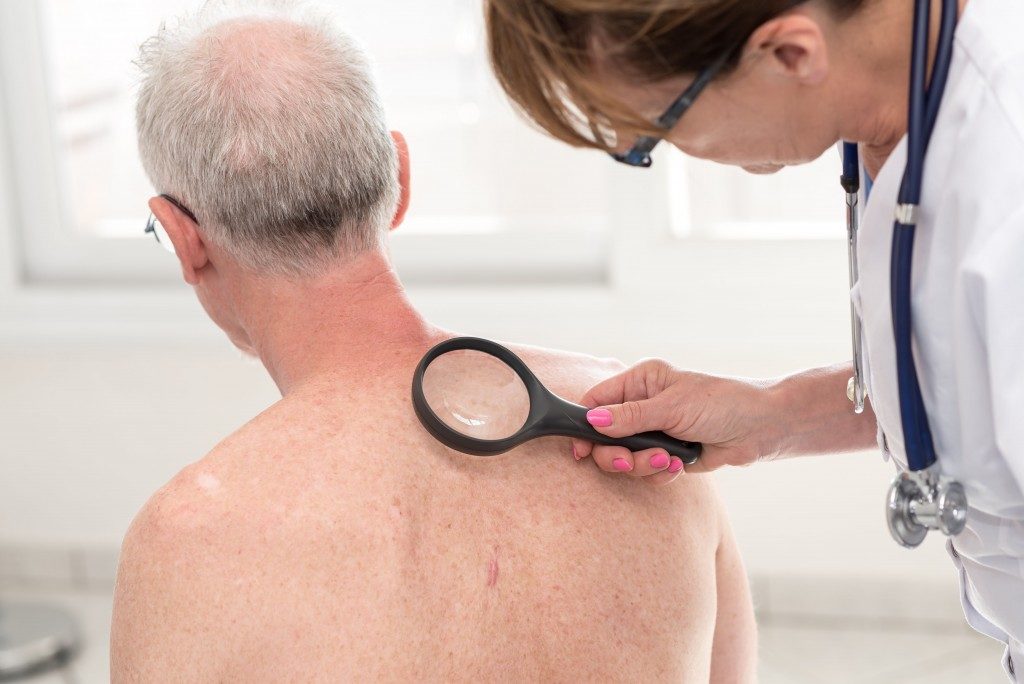When we think of skin care, we first think of exfoliants, moisturizers, and the like. But skin cancer is one of the largest challenges in the field of skin care treatment. Whether you’re in Salt Lake City, Miami, or Chicago, you’re at risk of developing skin cancer.
But just what exactly are you at risk of?
What is Skin Cancer?
Skin cancer starts in skin cells. There are three major types of skin cancers: basal skin cancer, squamous skin cancer, and melanomas.
Basal skin cancer is the most common, which develops in sun-exposed areas, usually the head and neck areas. Though it grows slowly, if undetected and untreated, it can invade other tissues, like bone.
Squamous skin cancer is less common than basal skin cancer, but is more likely to spread to other areas and become fatal. It usually develops in areas like the back of the hands, ears, face, and neck; though it can also develop in other areas.
Melanoma starts in the melanocytes, the cells responsible for making melanin, which pigment the skin. Melanomas usually appear on the chest and back for men, and on the legs for women. However, it can also appear on the neck and face. It is the most dangerous form of skin cancer.
Ultraviolet (UV) radiation is the leading cause of all three cancers, though genetic factors and other carcinogens can also contribute.
Skin Cancer in the United States
Skin cancers are the most common kind of cancer in the United States. Physicians diagnose more than 9,000 people with a form of skin cancer in the country every day. Over 3 million Americans develop the condition each year.
According to the latest available data, one in five people living in the United States will develop skin cancer during their life.
In 2019, it is estimated that over 11,000 Americans will die from skin cancer, 7,230 of which will be from melanoma.Shocking as these numbers are, skin cancer may be preventable. If detected early, skin cancer is not only manageable but curable.
Prevention
You can reduce your risk of developing skin cancer by taking a few reasonable precautions against UV rays:
1) Seek shade between 10 am and 4 pm, when UV rays are strongest
2) Cover your exposed skin with long sleeves and long pants or skirts
3) Wear a hat when venturing out in daylight to protect your face and neck
4) Use water-resistant, broad spectrum sunscreen

Skin Cancer Detection
Though prevention is better than a cure, early detection may help you live longer and make it easier to cure should you have a skin cancer. Scan your body for these signs.
For Melanomas
Melanomas usually look like moles; look for the following characteristics:
-
- Melanomas are asymmetrical, unlike normal moles
- Melanomas have irregular borders, which can appear jagged and blurry
- The color of melanomas varies, with different shades of red, pink, or even blue
- Melanomas grow and change; keep an eye on moles that shift in color, size or shape
For Basal Cell Cancer
Observe the following for this particular skin cancer:
-
- Wheel-like blood vessels on pink growths
- Scar-like patches of skin, which may appear yellow and firm
- Itchy red patches
- Oozing sores that don’t close, or reopen when they heal
- Small bumps that can be red or pink, with speckles of blue, black or brown
For Squamous Cell Cancer
This cancer can appear as one of the following:
-
- Bleeding scaly patches
- Raised growths or lumps with a depression in the center
- Growths that may seem like warts
- Open sores that don’t close, or reopen when they heal
Should you find any indication that you have any form of skin cancer, locate and contact your skin care specialist. Early detection may save your life, and sharing this information may save someone else’s.



